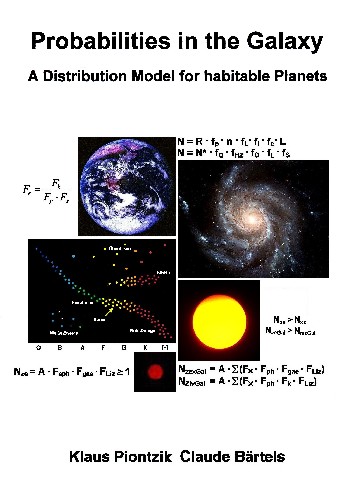| The number of stars in our galaxy forms the basis
of all considerations made here. The set of G stars Ns
is a real subset of the set of all stars A in our galaxy.
The set of G stars that have planets Np, is in turn a real subset of the sun-like star systems Ns. The set of G stars that have planets in the habitable zone Nh, is in turn a real subset of the sun-like star systems with planets Np. Therefore: Nh ⊂ Np ⊂ Ns ⊂ A The chain-like structure of the equations for the number of planets comes from this subset chaining. The individual probability factors are multiplicatively linked to form a chain.This structure will continue and grow in all further considerations. The final equation that then results is equivalent to the structure of the classic Drake equation (Chapter 9.1) and the Seager equation (Chapter 10.1). This not only makes it possible to compare the models, but also to transform the Drake and Seager equations into the present model. Since the model is built up step by factor, this should contribute to a better understanding of the chain-like structure of the equations. |

|
176 sides, of them 64 in Color 76 pictures 11 tables Production and publishing: Books on Demand GmbH, Norderstedt ISBN 9-783-7528-5524-1 Price: 22 Euro |
|